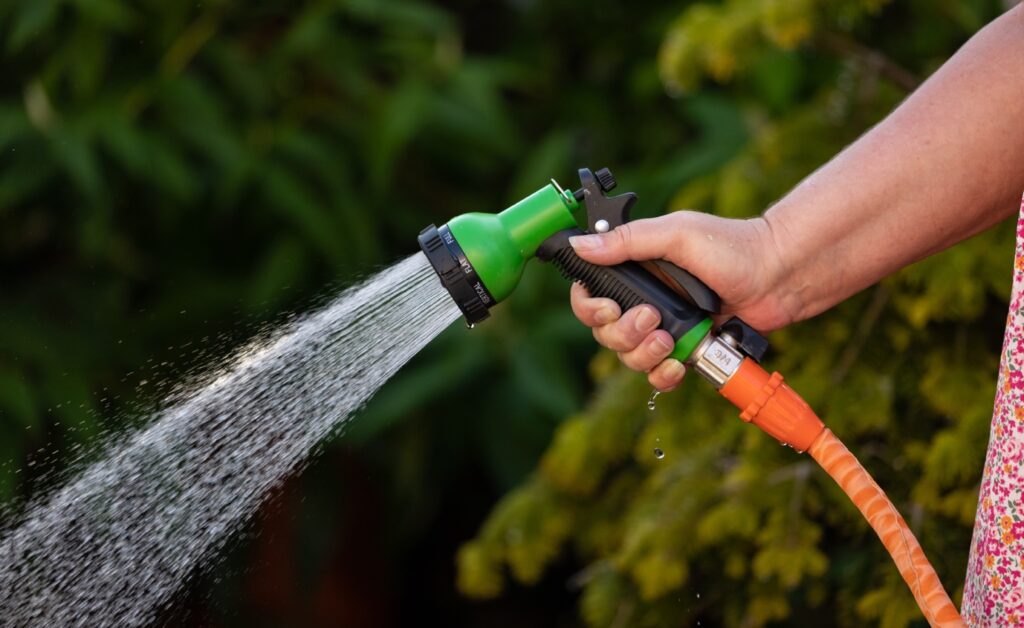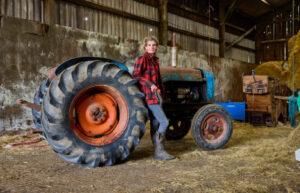Water result: Ten ‘reel’ good hacks for your garden hose

With Brits basking in a recent heatwave and another to come this month, here are some top tips to get the most out of your garden hosepipe this summer.
The outdoor experts from GardenBuildingsDirect.co.uk have revealed the ultimate guide on caring for your hose – so you can keep watering in all conditions.
A picture containing person, tree, outdoor, hand
Description automatically generated
Essential to life, it is critical to have a ready supply of water available to nourish your plants and these top tips will enable you to maximise the performance of your hosepipe if it gets badly kinked or suffers a split – or even if you lose the adapter.
A spokesman for GardenBuildingsDirect.co.uk said: “These top tips can extend the life of the hosepipe meaning you don’t automatically need to rush out and buy a new one if it ends up needing a repair or becomes worn through wear and tear.
“Our guide covers many different aspects of looking after your hosepipe so that it can provide many years of service and enable you to concentrate on helping your garden to flourish.”
The experts explain hoses have both female and male adapters, which is useful to know when visiting DIY stores for advice on repairs. The male adapter has the threading on the outside of the hose fitting while a female adapter has the threading on the inside of hose fittings.
Here is the handy guide to your hosepipe:
1 – Aim precisely: When watering, aim the hosepipe head beneath the leaves and foliage towards the base of the plants to ensure water gets to the roots and is not lost in the air or deflected away from the soil.
2 – Is watering required? Different plants need differing levels of water. It’s useful to check the guides that come with plants when you buy them if you can. You can also check the soil around 15cm below the surface to gauge moisture levels and if it is dry, then it is probably in need of watering. But be careful as overwatering can cause leaves to turn yellow and fall off more quickly than with moderate watering.
3 – Hack for freezing weather: Not a concern during summer months, but come winter and it is an idea to consider wrapping your hose in heat tape and ensuring there is no excess water in the pipe which could freeze and damage the hose.
4 – Using a garden hose without an adapter: Take an uninflated balloon, put the end of the balloon over the end of the hosepipe, cut a hole in the top of the balloon, push the balloon onto the end of the tap and tie it around the tap using duct tape. The water from the tap will travel through the balloon and down into the hosepipe.
5 – Watering hanging baskets: For watering hanging baskets and containers, you may need to water more than once a day if the weather is humid, windy or hot. On days when it is raining you might not need to water at all.
6 – Resurrect a dripping hose: Disconnect the end of the hose from the connector, and carefully remove the enlarged end of the hosepipe with a sharp knife – around one inch from the end. Then using the ground as pressure, squeeze the fresh end of the hosepipe back into the connector until it is tight, fastening it again. This hack should mean no more dripping water as the piping is tight again.
7 – Prevent those kinks: Extend the hosepipe so it is all off the hose reel, on the ground and flat, being careful to remove any kinks. Pressurise the pipe with water, but ensure the end of the hose is switched to off so no water can escape. Then carefully wrap the first part of the hosepipe onto the reel and keep carefully wrapping it around in neat coils until you reach the end of the spool, then keep coiling the pipe again onto the next layer of hose reel. Then turn off the water once the hose has been reeled in.
8 – Bamboozled by the hose size?: Your hose size could be half an inch, 5/8th of an inch or three quarters of an inch across. Measure the end of the hose with a ruler, making the hose as round as possible to ensure you get the correct measurement. If all else fails, cut off an inch of your hosepipe and take it to the hardware store to check it against the adaptors, connectors or hose heads, or get an assistant to help.
9 – When the rubber seal fails: If the head is leaking, the rubber seal inside may have broken. The rubber can dry up and break down over time, causing leaks to occur. If this is the case, use a screwdriver to scrape out the old seal sitting within the head of the hose and fit a new rubber washer which you can buy from a hardware store.
10 – Recover from a hosepipe pinhole or tear: Cut out the small section of hose which has the hole or tear, carefully with a large utility knife. You can then use a barbed coupling and two hose clamps to fix the ends together again. Apply some hand soap on the barbed coupling so that it can fit more easily onto the cut ends of the hose. Then attach the hose clamps to either side of the barbed coupling and screw the clamps tightly together using a screwdriver to ensure there will be no leaks.




